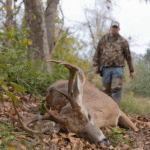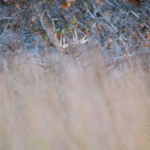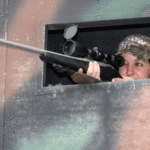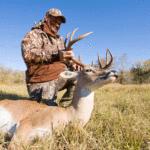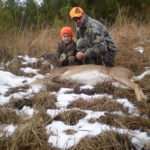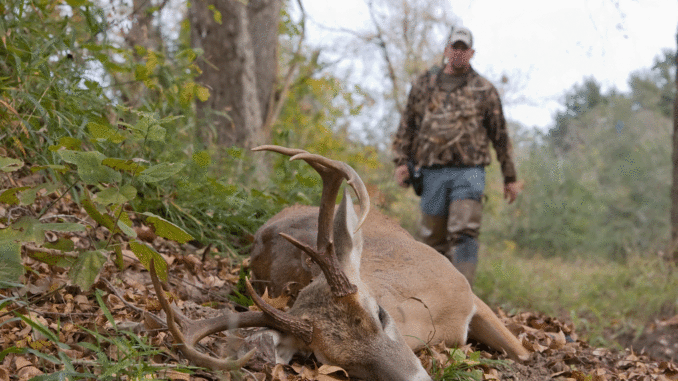
These hunters have discovered that food plots are exactly where you don’t want to hunt this month.
I’m not sure what it means to hunt anymore.
I used to know, when I snuck through the hardwood ridge between my parent’s house and the Bogue Chitto River with my single-shot 20-gauge shotgun crossing my chest at the ready, listening for shaking tree branches.
I used to know, when I scouted the white-oak flat behind my uncle’s hayfield with my camouflage stool in one hand and my 12-gauge slug-gun in the other looking for scratched dirt and shattered acorn shells.
I used to know, when I slid through the slough across from my great aunt’s in my pirogue with my pump shotgun resting on a bag of decoys looking for resting wood ducks beneath holes in the cypress canopy above.
To see if the definition of hunting has changed, I pulled up the invisible dictionary residing somewhere on my Apple laptop. Very simply, it told me that the word hunt means to pursue and kill wild animals for sport or food.
As I looked further, it told me that the word hunt could also mean to chase and kill or to try to find someone or something.
Being a student of the English language, I dug a little further and found that pursue means to follow someone or something in order to catch it. Chase referred me back to pursue, and find meant to discover someone or something after a deliberate search.
And then it hit me like a ton of bricks while Louisiana Sportsman editor Todd Masson and I picked each others’ brains on the front porch while trying to figure out why our food-plot hunting had been so slow.
“The fella who hunts down the road told me he’s seeing more deer than he’s seen in three years,” I told him about a guy that my dad lets hunt some family land that isn’t connected to the parcel we live on.
“Yeah,” Masson countered, “but he’s hunting the deer. We’re hoping the deer hunt us.”
Bingo!
What Masson, his son Joel and I have been doing for the last few years is sitting on the edge of food plots hoping the deer come to us.
The more I thought about it, the more I stewed and realized that if the fish weren’t biting I dang sure wouldn’t fish the same spot with no bites.
If the ducks weren’t flying I dang sure wouldn’t hunt the same spot looking at the empty blue sky.
So why in the heck were we continually sitting on the same food plots looking at the same green grass when the deer weren’t there?
Now don’t get me wrong. I like hunting food plots, but, truth be told, I probably like planting them more than I like hunting them. And we’ve killed deer off of all of our plots for the last three or four years.
But our plots aren’t like those you see on television where the hunter has to figure out if he wants to shoot the deer to the left or the deer to the right. And our plots are definitely not like the ones on television where the hunter has to wait on five 8-pointers to move so he can shoot the 12-point behind them.
Therefore, I have dedicated this deer season to hunting deer rather than having them hunt me. Rather than wait and shoot, I’m going to pursue and kill.
Oh, I’m going to sit on the plots just because I enjoy it, and they are good places for the kids to hunt, but when the deer aren’t there, I’m going looking for them.
To help me figure out when to hunt the plots and when to hunt the woods, I took my quandary to some friends I know hunt food plots but have also killed some big deer in the woods. If they could do both, maybe they could teach me a thing or two and convert me from a farmer to a hunter.
Although you may know him better as a BASSMASTER Elite Series bass tournament pro, Roanoke’s Dennis Tietje has the skins on the wall to prove he’s just as good of a deer hunter as he is a bass angler. In fact, he’s got 131 skins on the wall as he just killed his 131st deer this past October.
“I’ve been hunting deer all my life, and I’ve got a record of every deer I’ve killed,” Tietje said. “And what I have found is that Louisiana deer are just nocturnal — the worst in the world.
I’ve got probably five acres of food plots planted, but I basically give up hunting them after the first few days of the season.”
Although Tietje insists that his food plots have dramatically improved the deer hunting on his land in west-central Louisiana, he figured out a long time ago just how crazy it was to sit on the same stand looking at the same plot with the same few deer maybe coming out 15 minutes before dark.
So why do so many other hunters continually define insanity by doing the same thing over and over again while expecting different results?
“Because plots look pretty,” Tietje retorted, “and we know some deer will step out in those last few minutes.
“I guess those same deer stepping into that pretty green gives us something to look at. But the problem is they don’t come in there during the day.”
To Tietje’s way of thinking, the most successful hunters hunt where the deer are. Since we can’t hunt at night, why do we put so much emphasis on hunting a spot during the day that deer only frequent at night?
His simple solution to knowing when to get off the food plots is that if the deer aren’t there you shouldn’t be either.
“This is what I see on my property,” Tietje pointed out. “I see deer in my plots the first few days of the season, but then they’re gone.
“I don’t think it has as much to do with pressure as it does that they simply become less dependent on plots as soon as the acorn crop hits the ground.
“Once we get into the middle or late December, and they need the plots again because they’ve eaten up all the acorns, I start seeing them back in the plots a little bit during the day.”
But what about the rut? Aren’t plots supposed to attract does, which in turn attract bucks during the rut?
According to Tietje, that way of thinking is just a little bit convoluted because it’s true in one sense, but holds little water in the other.
“Bucks are going to be where the does are,” he said, “but if the does are in your plots only at night, what good does that do you? If you want to kill the stupid bucks chasing does, you’ve got to hunt where the does are in the morning or on up in the day.”
Tietje based his belief on noticing more and more through his own observations and trail-camera evidence that his bucks really start chasing around 4 a.m. They chase most of the morning, and then he’s noticed another spurt of activity from about 1 until about 3 p.m.
“So if the does aren’t in your plot at those times, the bucks won’t be either,” Tietje said. “I let a lot of bucks go by, and when you do that, you get to watch them do things you don’t get to see if you shoot the first buck that shows up.”
Washington Parish resident and veteran food plotter Karl Casanova has made many of the same observations that Tietje has on the opposite side of the state. Since the rut in his area is so late in the season, Casanova believes his food plots are hit either at night or during the rut.
“My two best opportunities to kill deer in my plots are really early in bow season or right at the end of our season during the rut,” Casanova said. “Through the years, I would say that I have seen more deer late in the afternoon but more bucks up in the middle of the morning, and hardly any of those have been in my plots unless it’s one of those two times.”
Casanova keeps stands on his plots. He keeps stands up that are near plot approaches. And he keeps some up that are nowhere close to any of his plots. This combination allows him to hunt where the deer are without blowing out any one stand by hunting it too much.
“And one dead giveaway for me that I need to get off of a plot is a general lack of droppings,” Casanova explained. “If you are seeing some browsing sign but no droppings, those deer aren’t staying in there very long. They’re just crossing your plot and grabbing a bite to eat as they keep moving.”
So when should we get off the food plots and go hunting? The simple answer is when the deer aren’t there. And unfortunately for law-abiding Louisianans who hunt under the sunlight rather than the flashlight, that’s much of the season.
The farmer in me may want to sit on the plots and admire the fruits of my labor, but the hunter in me yearns for something more. If I remember correctly, I think he wants to hunt.
